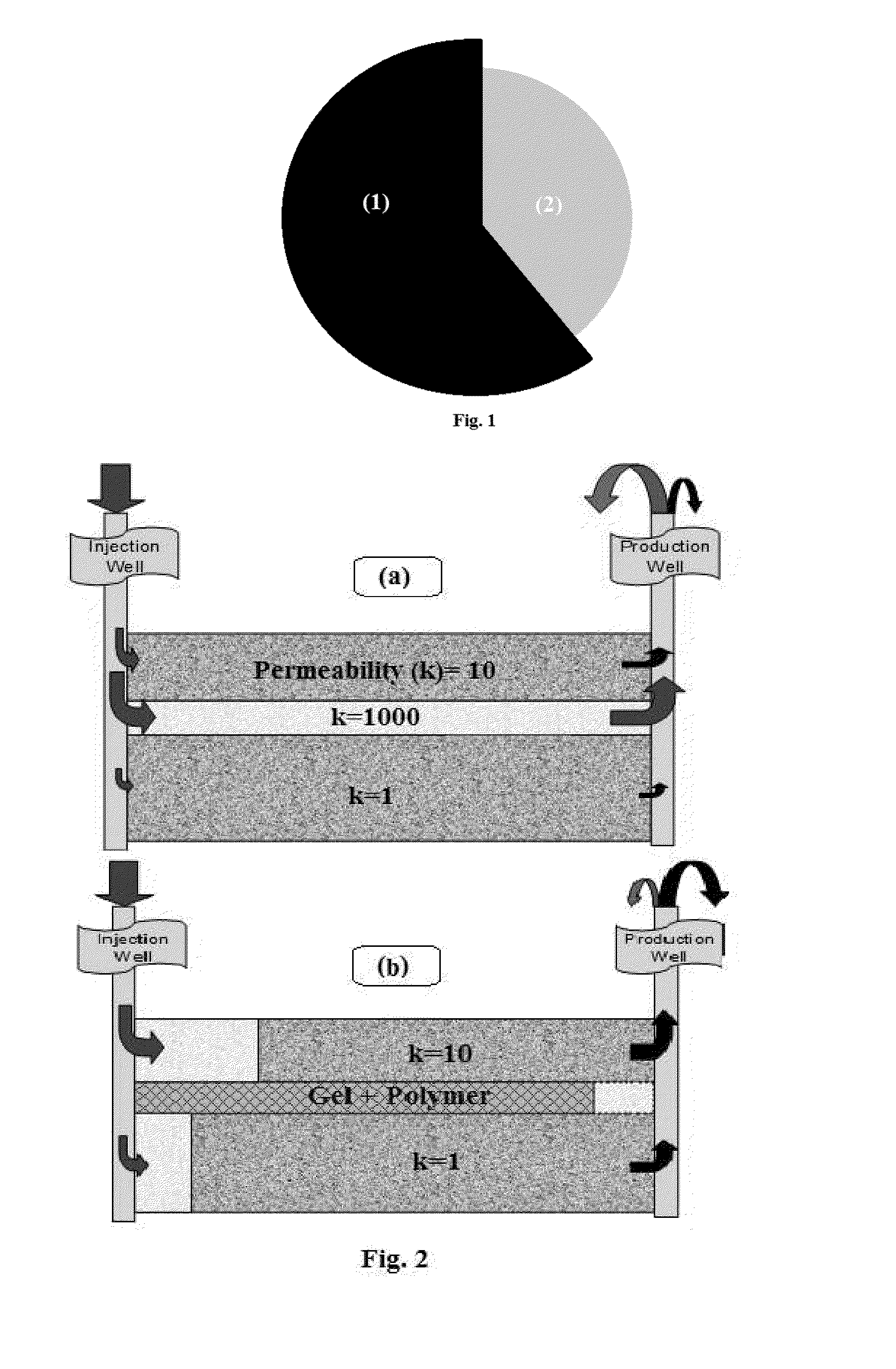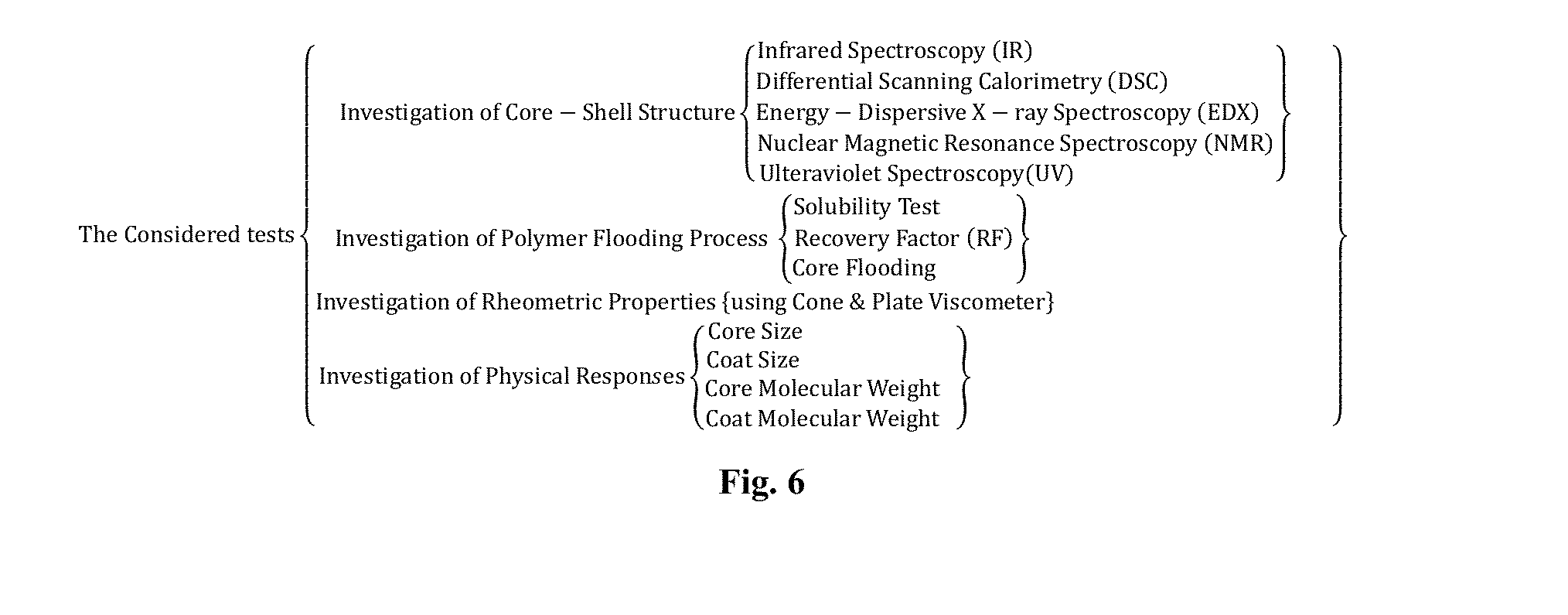Producing Nanostructure of Polymeric Core-Shell to Intelligent Control solubility of Hidrophilic Polymer during Polymer Flooding Process
a technology of nanostructure and polymer core, which is applied in the direction of sealing/packing, chemistry apparatus and processes, and wellbore/well accessories. it can solve the problems of high cost of injection water use, low efficiency of sweeping, and non-economic injection fluid use of polymers, so as to reduce the use of polymers, and reduce the energy consumption during flooding process.
- Summary
- Abstract
- Description
- Claims
- Application Information
AI Technical Summary
Benefits of technology
Problems solved by technology
Method used
Image
Examples
example one
[0056]At first, 60 ml of hexane solvent and 0.0035 ml of span 80 surfectant are mixed in the reactor, and after mixing those by using a mechanical mixer with speed around 2000 rpm, the water phase, including 5 gr hydrophilic monomer of acrylamide and 20 ml of water, is distributed to the previous solution. It should be noticed that the distributing process of water phase is one of the important parameters which affects the size of core particles. So, the water phase is injected to the mixed organic phase in the reactor via a microinjection.
[0057]This case helps in making emulsion of polymer nanoparticles. After the mixing water and organic phases, the initiator system (redox), including ferrous sulfate and potassium persulfate, is injected with weight 0.001688 gr and 0.000725 gr, respectively in temperature condition −15° C., by entering this material into the reactor. The first time period of polymerization is selected that the reactor remains under mentioned conditions for 30 minu...
example two
[0066]Conventional water / oil emulsion polymerization is preceded by adding the surfactant to stabilize hydrophobic monomers in aqueous medium. But in this invention hydrophilic nanoparticles are dispersed in an organic medium; i.e. styrene monomer. Polyacrylamide is synthesized by the emulsion polymerization to reach high molecular weight (˜20 million) and then its dilute solution; it is used to produce nanoparticles through spray drying method. In the experiments deionized water, styrene monomer, potassium persulfate (KPS) as initiator, span 40 as surfactant, polyacrylamide particles and xylene are used. Styrene is treated with 1 molar NaOH aqueous solutions to remove the inhibitors and is distilled under reduced pressure with nitrogen atmosphere prior to the polymerization. All other materials are analytical grade without further purification.
[0067]Encapsulation experiment is carried out in a 250 ml, 3 necked flask. 50 ml of styrene monomer, 5 ml xylene to solve polystyrene, 0.5 g...
PUM
| Property | Measurement | Unit |
|---|---|---|
| size | aaaaa | aaaaa |
| size | aaaaa | aaaaa |
| release time | aaaaa | aaaaa |
Abstract
Description
Claims
Application Information
 Login to View More
Login to View More - R&D
- Intellectual Property
- Life Sciences
- Materials
- Tech Scout
- Unparalleled Data Quality
- Higher Quality Content
- 60% Fewer Hallucinations
Browse by: Latest US Patents, China's latest patents, Technical Efficacy Thesaurus, Application Domain, Technology Topic, Popular Technical Reports.
© 2025 PatSnap. All rights reserved.Legal|Privacy policy|Modern Slavery Act Transparency Statement|Sitemap|About US| Contact US: help@patsnap.com



